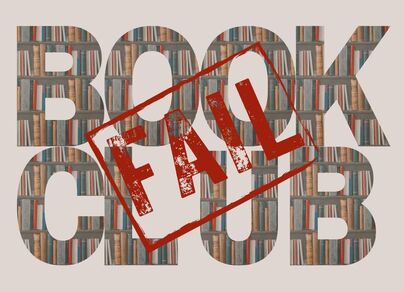|
I have committed one of the common sins of a book club: I didn’t finish (DNF) the book. However, rather than forgetting to or being too busy, I purposefully set the book down and said no more of that. The reason is both complex and simple. The simple way of putting it: the book sucked. But no one comes to this blog to hear me say that and move on. I learn nothing from disliking a book. However, we can all learn from WHY I disliked a book.
I’ll start by saying that this book had an uphill climb from go. The book club is for Diversity and Inclusion at work, and the books are supposed to help us see from more perspectives than just our own. The author of the book in question is 1. a white straight man, which is not the point of diversity and inclusion book club, 2. an author this group has read before (in fact, the book immediately before this choice), and 3. a man who wrote from a Mexican-American gay man’s perspective and several Native perspectives in these two books—none of which overlap with his perspective (yes I checked thoroughly). And no, it wasn’t just that the characters happened to be from those marginalized groups, both books were about that marginalization in a major way. So yeah, this book was going to have to be amazing for me to get very far. Lesson: if your book is about how being marginalized impacts the main POV character(s), then you should be part of that marginalized group. Now let’s take a look at the writing. It was over 400 pages. The first 115 pages were in one time period following quite a few characters. So many in fact that I mixed them up. There was also head hopping. And no, it wasn’t supposed to be an omniscient POV. So I was already struggling, and at the ¼ mark was lost as to the main character and their want. And then there was a 100+ year time jump. Jesus, okay, all new characters. Barely had a handle on that then boom, back to 100+ years ago. I remembered so few of the characters that at this point I gave up hope. Lesson: having too many characters is confusing. Lesson: A random time jump that then begins a back-and-forth pattern in following those two time periods has to be earlier or it throws off readers. Lesson: Head hopping will only add to any confusion already present; if you’re going omniscient go all the way or it will be a mess. Let’s not ignore the racist stereotypes/word choices throughout the novel. I actually cringed when, in a Native woman’s POV, the author wrote about how she viewed her community. I don’t think anyone would have used those words to describe themselves. Yikes. Lesson: If you’re not sure if what you just wrote is racist, imagine a stranger describing YOU that way. Also, pay an authenticity reader. And also, see Lesson 1. By about page 150, I closed the book and didn’t open it again. So glad I rented it from my local library and didn’t give the author any of my money for the displeasure of slogging through part of the novel. And no, by page 150 it still didn’t demonstrate what any of the characters actually wanted, and so I consider it to have no plot. Lesson: unless you're writing literary fiction, your book needs to show who your main character is (or are) and what they want (even if that changes!) as early as possible. Have you ever failed to finish a book club book? Did you admit it at the meeting or pretend you'd finished? Let's discuss in the comments!
0 Comments
Leave a Reply. |
Archives
April 2024
Categories
All
|


 RSS Feed
RSS Feed